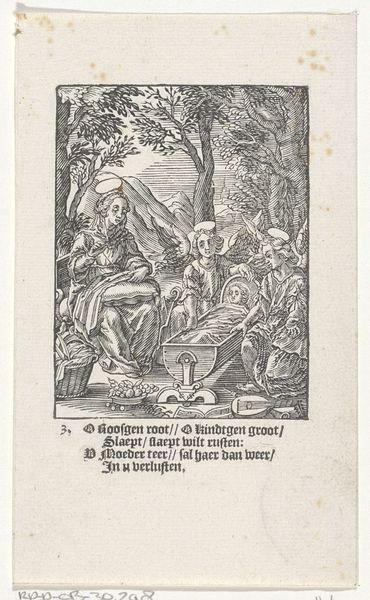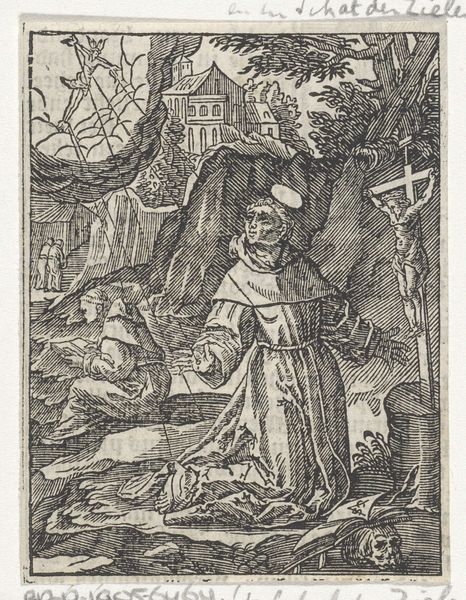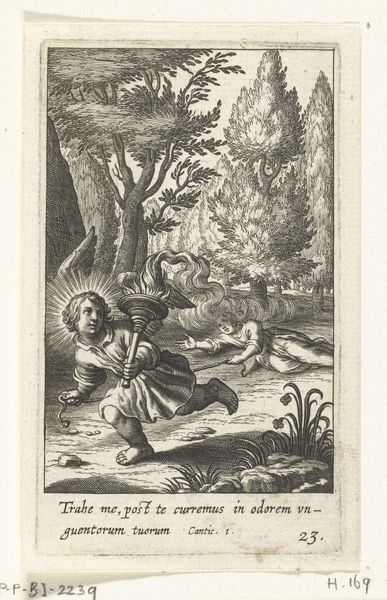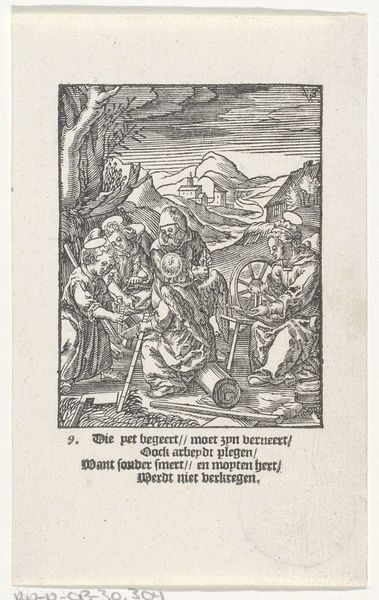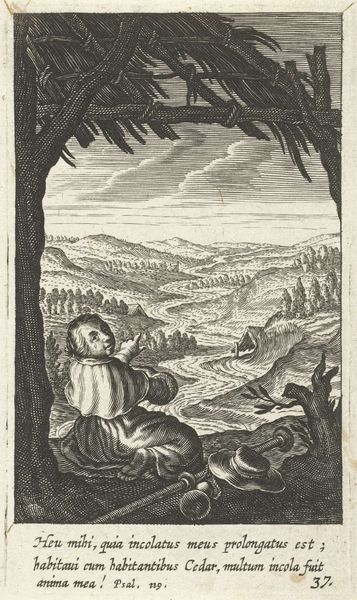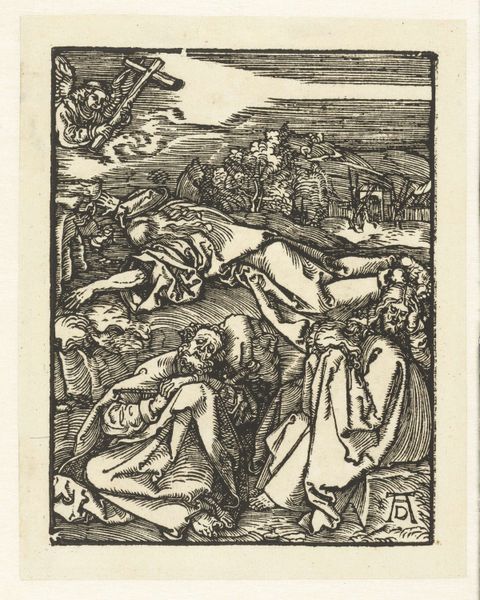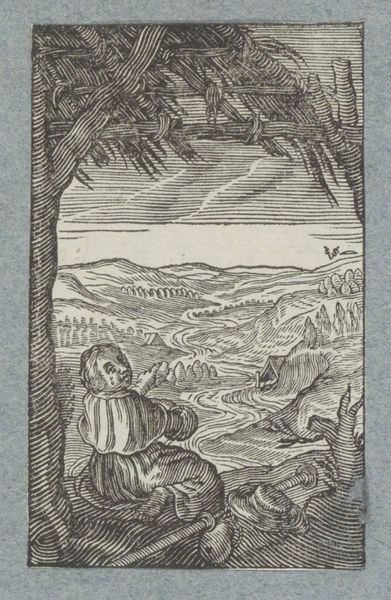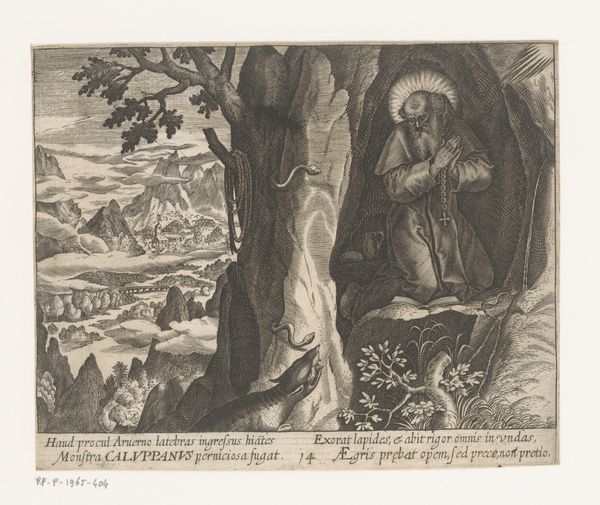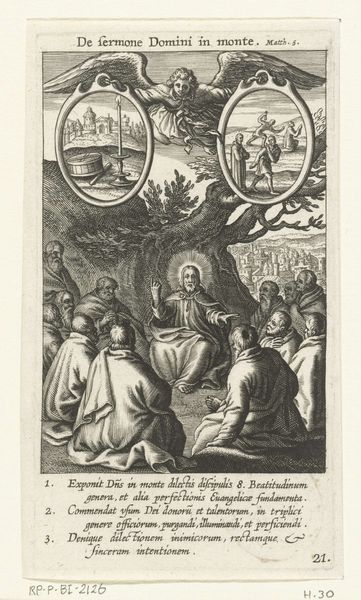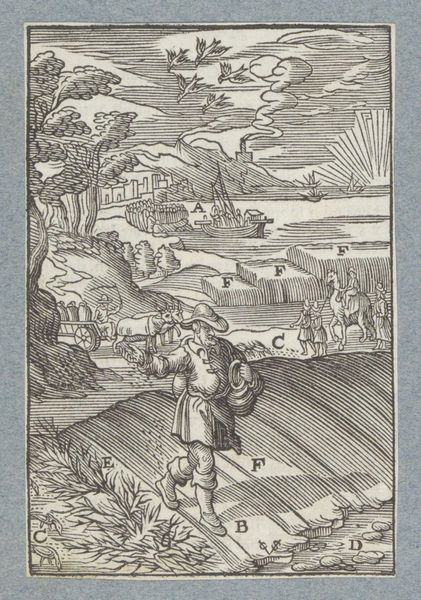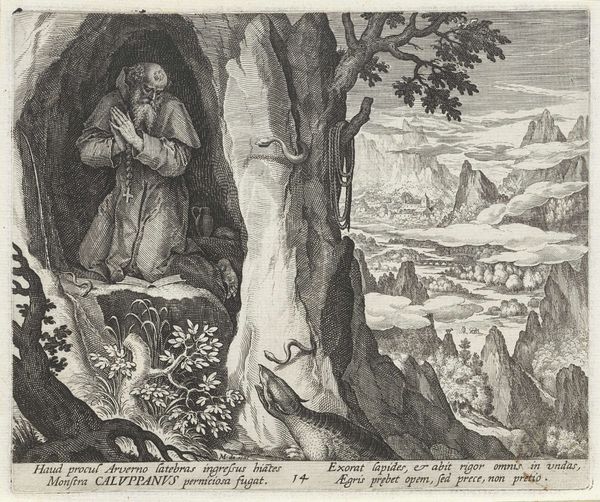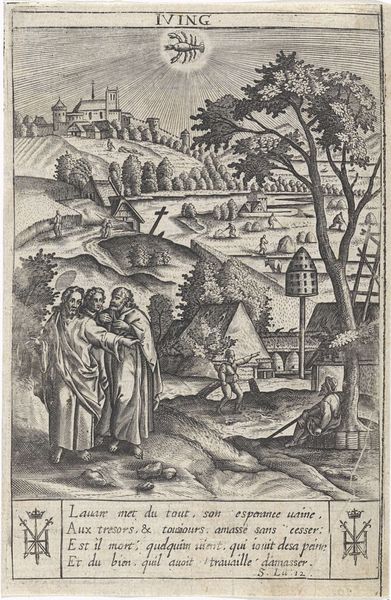
Heu mihi quia incolatus meus prolongatus est! Habitavi cum habitantibus Cedar, multum incola fuit anima mea 1628
0:00
0:00
drawing, print, ink, engraving
#
drawing
#
baroque
# print
#
old engraving style
#
landscape
#
figuration
#
ink
#
pen-ink sketch
#
line
#
engraving
Dimensions: height 115 mm, width 69 mm
Copyright: Rijks Museum: Open Domain
Curator: Let's take a look at this engraving by Christoffel van Sichem II, dating from 1628. It’s entitled "Heu mihi quia incolatus meus prolongatus est! Habitavi cum habitantibus Cedar, multum incola fuit anima mea" – quite a mouthful, isn't it? It’s currently housed at the Rijksmuseum. Editor: Immediately, the sharp, precise lines jump out. The density of those engraved lines, creating the shadows and texture… It's quite stark, almost severe in its tone. There's a palpable sense of labor embedded in its creation. Curator: The Latin title translates to “Woe is me, that my sojourning is prolonged! I dwell with them that dwell in Cedar; my soul hath long dwelt.” This reflects Psalm 120, expressing feelings of displacement and longing for a home, a theme resonating with many during periods of upheaval. Note the figure, slumped against the tree, gazing towards a distant landscape. That landscape becomes a symbol of unattainable peace. Editor: Exactly, I am looking at the technical process: how the artist uses different tools and the engraver's mastery of them. You see, the act of creating multiple impressions, allows wider audiences access to spiritual imagery, turning something deeply personal into something consumable. The artist, the printer, and even the end-user, all part of this devotional object's journey. Curator: I find it intriguing how the landscape itself seems to mirror the figure's internal state. The winding river, the looming trees – they become visual metaphors for the trials and tribulations the soul must endure. It speaks to the power of landscape to reflect psychological turmoil. Notice how the engraver contrasts the chaotic textures around the figure with the seemingly calm and unreachable landscape beyond. Editor: Yes, and think about the materiality of it: the ink, the paper, the metal plate used for engraving. These everyday materials become vehicles for complex theological ideas. Also, considering the period, were there apprentices involved? It prompts us to reflect upon production and artistic labour as an important point of focus. Curator: It is very moving, isn't it? Considering its relatively small scale, the emotional impact of this print is quite powerful. Editor: Absolutely. It makes you appreciate the hand that made it, the processes behind it. That connection across centuries, through materials and labour, is a poignant reminder of shared human experiences.
Comments
No comments
Be the first to comment and join the conversation on the ultimate creative platform.
